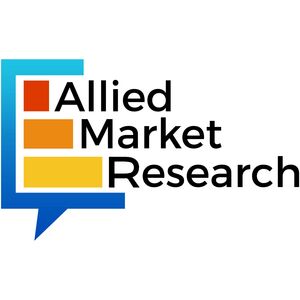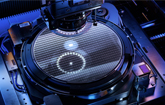Silver nanoparticles (AgNPs) have emerged as a promising solution in water treatment technologies due to their exceptional antibacterial and antiviral properties. Their high surface area-to-volume ratio allows for greater interaction with microbial membranes, leading to effective disinfection even at low concentrations. This makes them highly efficient in eliminating a wide range of pathogens, including bacteria, viruses, and fungi, which are commonly found in contaminated water sources.
WILMINGTON, Del., Nov. 6, 2025 /PRNewswire/ -- Allied Market Research published a report, titled, "Silver Nanoparticles Market by Synthesis Method (Wet Chemistry, Ion Implantation, and Biological Synthesis Method), Shape (Spheres, Platelets, Rods, Colloidal Silver Particles, and Others), and Application (Healthcare & Life Science, Textile, Electronics & IT, Food & Beverages, Pharmaceuticals, Cosmetics, Water Treatment, and Others): Global Opportunity Analysis and Industry Forecast, 2025-2034". According to the report, the "silver nanoparticles market" was valued at $4 billion in 2024, and is estimated to reach $12.1 billion by 2034, growing at a CAGR of 11.7% from 2025 to 2034.
Download Sample Pages of Research Overview: https://www.alliedmarketresearch.com/request-sample/A06923
Rising Demand in Healthcare & Medical Applications
Silver nanoparticles (AgNPs) have gained significant traction in the healthcare and medical sectors, primarily due to their potent antimicrobial properties. Their ability to effectively inhibit a wide spectrum of bacteria, fungi, and viruses has made them a valuable component in various medical products. This includes wound dressings, surgical instruments, catheters, and surface coatings for medical devices, all of which benefit from the enhanced infection control provided by AgNPs. In April 2023, National Medical Devices policy aims to boost the medical devices sector from its current US$11 billion valuation to US$50 billion by 2030. It focuses on building enabling infrastructure, facilitating R&D and innovation, attracting investments, regulatory streamlining, human resource development, and brand positioning. Additionally, silver nanoparticles are being explored for use in drug delivery systems, biosensors, and diagnostic tools due to their biocompatibility and unique physicochemical properties. This opens new avenues in personalized medicine and targeted therapies, further expanding their relevance in modern medical practices. In July 2022, Eli Lilly partnered with Triastek, a Chinese 3D-printing technology company, to develop oral drugs with targeted release profiles in specific regions of the gastrointestinal tract. This collaboration aims to improve the bioavailability of orally administered drugs.
Report Coverage & Details:
| Report Coverage |
Details |
| Forecast Period |
2025–2034 |
| Base Year |
2024 |
| Market Size in 2024 |
$4 billion |
| Market Size in 2034 |
$12.1 billion |
| CAGR |
11.7 % |
| No. of Pages in Report |
732 |
| Segments Covered |
Synthesis Method, Shape, Application, and Region |
| Drivers |
- Rising demand for silver nanoparticles in electronics and consumer products - Growing demand for silver nanoparticles in cosmetics and personal care products |
| Opportunity |
Increase in demand for silver nanoparticles in antibacterial coatings for medical devices |
| Restraint |
Toxicity concerns for silver nanoparticles |
Rising Demand for Sustainable & Nanotechnology-based Solutions
The increasing global emphasis on sustainability and environmental responsibility is driving demand for green and eco-friendly alternatives across various industries, including nanotechnology. In this context, silver nanoparticles (AgNPs) are witnessing growing interest, particularly when synthesized through environmentally friendly methods. Traditional chemical and physical synthesis techniques, while effective, often involve hazardous reagents and generate toxic by-products. In contrast, green synthesis methods use biological agents such as plant extracts, bacteria, and fungi, offering a more sustainable and less toxic approach to nanoparticle production. In September 2024, Amity University hosted a workshop sponsored by the Science and Engineering Research Board (SERB) focusing on the application of nanotechnology for sustainable agriculture. The program emphasized the role of nanomaterials in promoting plant growth and enhancing agricultural productivity.
Increasing Demand for Silver Nanoparticles in Asia-Pacific Countries
The Asia-Pacific region is witnessing a significant surge in demand for silver nanoparticles (AgNPs), driven by rapid industrialization, expanding healthcare infrastructure, and rising consumer awareness. Countries such as China, India, Japan, and South Korea are at the forefront of this growth, leveraging silver nanoparticles across diverse sectors including medical devices, electronics, textiles, and water purification. In March 2024, Wipro GE Healthcare: Invested $960 million in R&D and manufacturing in India, focusing on PET CT diagnostic devices and other advanced medical equipment.
In addition to healthcare, the booming electronics and textile industries in countries like China and South Korea are adopting silver nanoparticles for their conductive and antimicrobial properties. AgNPs are used in the manufacturing of flexible electronics, sensors, and high-performance fabrics. In India and Southeast Asian countries, the integration of silver nanoparticles into water filtration systems and agricultural products is gaining momentum, as governments and private players focus on sustainable development and rural infrastructure. In March 2024, Wipro GE Healthcare invested $960 million in R&D and manufacturing in India, focusing on PET CT diagnostic devices and other advanced medical equipment.
Request For Customization: https://www.alliedmarketresearch.com/request-for-customization/A06923
Regulatory & Environmental Concerns is Expected to Hamper the Silver Nanoparticles Market
Stringent global regulations govern the use of silver nanoparticles (AgNPs) due to their potential environmental and health impacts. In the U.S., the Environmental Protection Agency (EPA) regulates nano-silver under the Federal Insecticide, Fungicide, and Rodenticide Act (FIFRA), mandating rigorous toxicity assessments for products like antimicrobial coatings. The European Food Safety Authority (EFSA) permits up to 0.025% weight/weight of silver nanoparticles in food-contact plastics, noting that ionic silver migration remains below safety thresholds. Australia's framework similarly enforces strict oversight, complicating market entry. These fragmented standards elevate compliance costs and delay product launches, especially for small manufacturers. Environmentally, about 30% of nano-silver products release particles into ecosystems, accumulating in sewage sludge (up to 6 mg/kg) and disrupting microbial communities vital for wastewater treatment. Such persistence and bioaccumulation raise concerns over long-term ecological risks. All these factors are expected to restrain the growth of silver nanoparticles market.
Patent Analysis of Silver Nanoparticles Market
The United States leads in AgNP patent filings, accounting for 47.6% of the total 126,810 patents, reflecting its robust research infrastructure and emphasis on nanotechnology innovation. The Patent Cooperation Treaty (PCT) system follows with 22.7%, facilitating international patent protection across multiple jurisdictions. The European Patent Office (EPO) holds a 10.2% share, indicating strong interest in AgNP technologies within Europe.
Canada and Australia contribute 6.3% and 5.5% respectively, showcasing their active participation in AgNP research and commercialization. India's share stands at 3.6%, highlighting its growing focus on nanotechnology applications. China, with 2.6%, demonstrates its commitment to advancing in this domain, despite a lower percentage compared to its overall nanotechnology patent filings. The Republic of Korea, the United Kingdom, and Japan each contribute 0.6% or less, indicating emerging or specialized interests in AgNP innovations.
Overall, the distribution of AgNP patents underscores the global engagement in nanotechnology, with the United States at the forefront, supported by significant contributions from international patent systems and other nations.
Leading Market Players: -
- Advanced Nano Products Co., Ltd,
- American Elements Corporation
- Ames Goldsmith Corporation, Cerion, LLC
- Aritech Chemazone Pvt. Ltd.
- Meliorum Technologies, Inc.
- M K Impex Corp.
- NanoComposix, Inc.
- Nanocs, Inc.
- NANOGAP SUB-NM-POWDER, S.A
- Nanografi co, inc
- NanoPure
- Nanoshel LLC
- NovaCentrix, Pen Inc.
- Prime Nanotechnology Co., Ltd.
- Strem Chemicals, Inc
The report provides a detailed analysis of these key players in the global steel casting market. These players have adopted different strategies such as new product launches, collaborations, expansion, joint ventures, and agreements to increase their market share and maintain dominant shares in different regions. The report is valuable in highlighting business performance, operating segments, product portfolio, and strategic moves of market players to highlight the competitive scenario.
Recent Key Developments
- In April 2024, The U.S. Department of Agriculture's Agriculture Research Services (ARS) announced that ARS published a study which reveals the ability of cotton gin waste to generate silver nanoparticles in the presence of silver ions.
- In January 2024, Applied Nanotech, Inc. announced that a newly constructed pilot plant was commissioned to ensure scale-up production of the company's prominent NanoFence technology.
Want to Access the Statistical Data and Graphs, Key Players' Strategies: https://www.alliedmarketresearch.com/silver-nanoparticles-market/purchase-options
𝐒𝐢𝐦𝐢𝐥𝐚𝐫 𝐑𝐞𝐩𝐨𝐫𝐭𝐬
- Polymeric Nanoparticles Market: Global Opportunity Analysis and Industry Forecast, 2021-2030
- Cerium Oxide Nanoparticles Market: Global Opportunity Analysis and Industry Forecast 2021-2030
- Metal Oxide Nanoparticles Market: Global Opportunity Analysis and Industry Forecast, 2021-2030
- Silver Iodide Market: Global Opportunity Analysis and Industry Forecast, 2021-2030
- Silver Salt Market: Global Opportunity Analysis and Industry Forecast, 2021-2030
- Silver Graphite Market: Global Opportunity Analysis and Industry Forecast, 2021 - 2031
About Us
Allied Market Research (AMR) is a full-service market research and business-consulting wing of Allied Analytics LLP based in Portland, Oregon. Allied Market Research provides global enterprises as well as medium and small businesses with unmatched quality of "Market Research Reports" and "Business Intelligence Solutions." AMR has a targeted view to provide business insights and consulting to assist its clients to make strategic business decisions and achieve sustainable growth in their respective market domain.
Pawan Kumar, the CEO of Allied Market Research, is leading the organization toward providing high-quality data and insights. We are in professional corporate relations with various companies and this helps us in digging out market data that helps us generate accurate research data tables and confirms utmost accuracy in our market forecasting. Each and every data presented in the reports published by us is extracted through primary interviews with top officials from leading companies of domain concerned. Our secondary data procurement methodology includes deep online and offline research and discussion with knowledgeable professionals and analysts in the industry.
Contact:
David Correa
United States
1209 Orange Street,
Corporation Trust Center,
Wilmington, New Castle,
Delaware 19801 USA.
Int'l: +1-503-894-6022
Toll Free: +1-800-792-5285
Fax: +1-800-792-5285
help@alliedmarketresearch.com
Web: www.alliedmarketresearch.com
Allied Market Research Blog: https://blog.alliedmarketresearch.com
Follow Us on | Facebook | LinkedIn | YouTube
Logo: https://mma.prnewswire.com/media/636519/Allied_Market_Research_Logo.jpg






Share this article